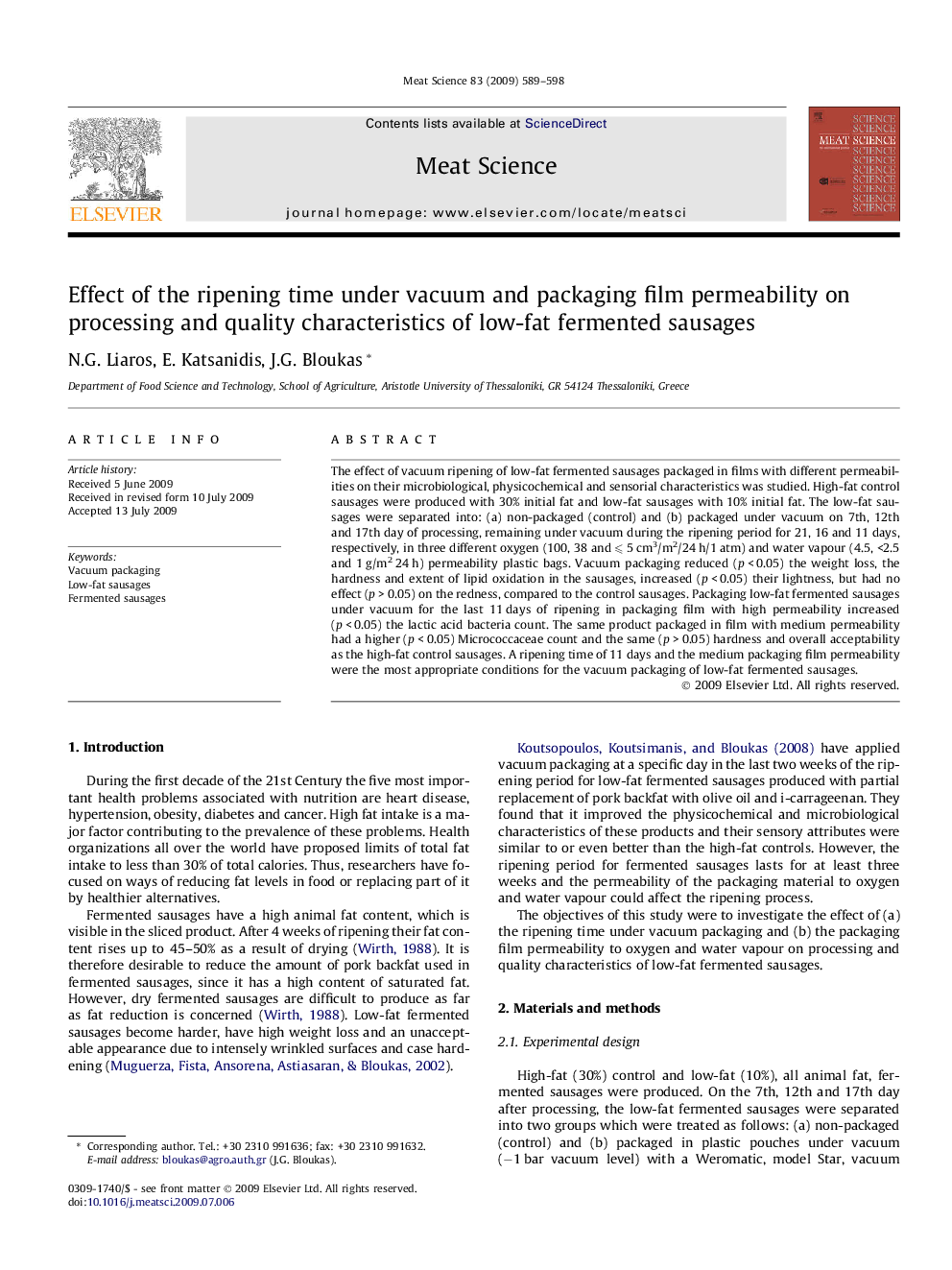| Article ID | Journal | Published Year | Pages | File Type |
|---|---|---|---|---|
| 2451191 | Meat Science | 2009 | 10 Pages |
The effect of vacuum ripening of low-fat fermented sausages packaged in films with different permeabilities on their microbiological, physicochemical and sensorial characteristics was studied. High-fat control sausages were produced with 30% initial fat and low-fat sausages with 10% initial fat. The low-fat sausages were separated into: (a) non-packaged (control) and (b) packaged under vacuum on 7th, 12th and 17th day of processing, remaining under vacuum during the ripening period for 21, 16 and 11 days, respectively, in three different oxygen (100, 38 and ⩽ 5 cm3/m2/24 h/1 atm) and water vapour (4.5, <2.5 and 1 g/m2 24 h) permeability plastic bags. Vacuum packaging reduced (p < 0.05) the weight loss, the hardness and extent of lipid oxidation in the sausages, increased (p < 0.05) their lightness, but had no effect (p > 0.05) on the redness, compared to the control sausages. Packaging low-fat fermented sausages under vacuum for the last 11 days of ripening in packaging film with high permeability increased (p < 0.05) the lactic acid bacteria count. The same product packaged in film with medium permeability had a higher (p < 0.05) Micrococcaceae count and the same (p > 0.05) hardness and overall acceptability as the high-fat control sausages. A ripening time of 11 days and the medium packaging film permeability were the most appropriate conditions for the vacuum packaging of low-fat fermented sausages.
